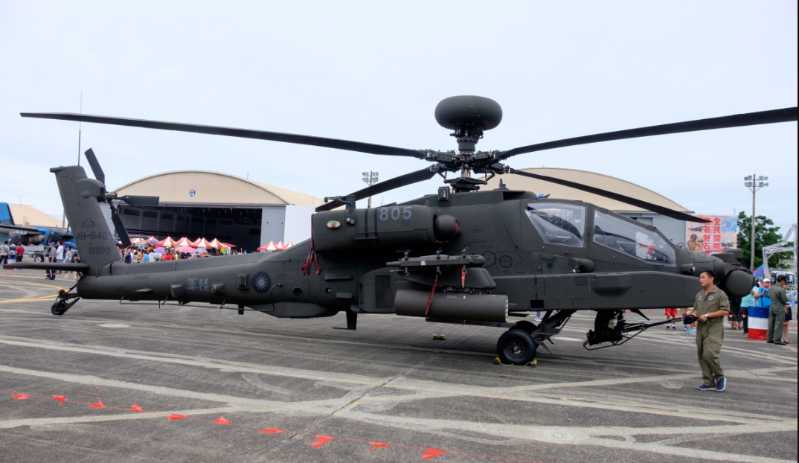In early September 2023, a video circulating on foreign social media showed that a "Challenger 2" main battle tank assisted by the United Kingdom to Ukraine was destroyed in the Russian-Ukrainian conflict. The video showed that the Ukrainian "Challenger 2" tank was hit by a Russian-made "Kornet" anti-tank missile, and flames and smoke were emitted, indicating that the tank may have caught fire after being attacked by a missile. The British media paid considerable attention to the destruction of the British-made main battle tank "Challenger 2". The British Broadcasting Corporation (BBC) said on September 6 that a video shared on social media showed a severely damaged British tank with smoke coming out of the vehicle. A Western defense source told the BBC that the "Challenger 2" tank manufactured and supplied by the United Kingdom to Ukraine was initially paralyzed by a mine. The mine explosion caused the rear fuel tank of the tank to catch fire, and the four Ukrainian crew members were evacuated to a safe area. The source also said that the tank was then targeted and destroyed by the Russian "Lancet" cruise missile. The British Defense Secretary confirmed that a "Challenger 2" tank was destroyed in the Ukrainian special operations zone. In fact, since the outbreak of the Russian-Ukrainian conflict, the tank and armored forces of both countries have suffered huge losses. So, what threats will the tank and armored forces face on the battlefield?
Russian-Ukrainian conflict, tank and armored vehicles suffered heavy losses
Since the outbreak of the Russian-Ukrainian conflict, the Russian army’s three major series of main battle tanks, T-72, T-80 and T-90, have fought with the Ukrainian army’s T-72, T-84 and T-64 series of main battle tanks in different situations such as ambushes and encounters. After that, when the Russian armored forces are still in a state of assembly, preparing to launch an attack or in a maneuver, if they are discovered by the Ukrainian army and NATO, they will soon be hit by the long-range rocket launchers and large-caliber howitzers of NATO’s military aid to Ukraine. The Ukrainian army’s various types of drones can also continue to provide firepower calibration and chase the Russian army. At the same time, if the Ukrainian army assembles armored forces to launch an attack, it will also be hit by the Russian army’s long-range superior firepower.
In the Russian-Ukrainian conflict, Ukraine is very clear that if it wants to launch an offensive (counterattack), it must lead with NATO-aided main battle tanks, especially the Leopard 2, whose combat and technical performance exceeds that of the Russian T-90. On January 24, 2023, the German federal government decided to provide Ukraine with "Leopard" main battle tanks and allow other countries to provide Ukraine with "Leopard" main battle tanks. At the same time, Germany will also provide Ukraine with a company of Leopard 2 main battle tanks, a total of 14. The United States has delivered its own M1 Abrams main battle tanks to Ukraine. Therefore, when Ukraine received the Leopard 2 assisted by Germany, the Netherlands, and the United Kingdom and the M1 Abrams main battle tank assisted by the United States, NATO hopes to see on the battlefield a replay of the scene in which the main battle tanks made by the United States and Britain defeated the Russian T-72/T-90 main battle tanks in the Gulf War. When Iraq invaded Kuwait, Soviet-made tanks defeated tanks made by the United States and Britain. In the Gulf War, the Soviet-made tanks equipped by the Iraqi army were vulnerable to the tanks of the US-UK coalition forces.

Since June 4, 2023, Ukraine has begun to implement the so-called "counterattack" operation. The Leopard 2 main battle tanks and M2A2 infantry fighting vehicles have not encountered a real opponent in the mobile attack-the Russian main battle tanks, but there have been many unconfirmed videos on the mobile Internet showing that advanced weapons such as Leopard 2 tanks and American Bradley infantry fighting vehicles have been repeatedly destroyed by the Russian army on the Russian-Ukrainian battlefield. On June 7, 2023, the Russian Ministry of Defense released a video showing how to destroy the Leopard 2A6 tank, and the Leopard 2A6 tank was successfully destroyed for the first time in actual combat. What is even more embarrassing for Germany is that in an operation of the Russian army, they actually seized a nearly intact Leopard 2A6 tank. According to the Russian Satellite News Agency, the Russian army seized a German Leopard 2A6 main battle tank near the Zaporozhye front. The Russian Ministry of Defense deliberately released a video showing a destroyed armored unit, including at least one complete Leopard 2A6 tank and several American-made Bradley M2 infantry fighting vehicles.
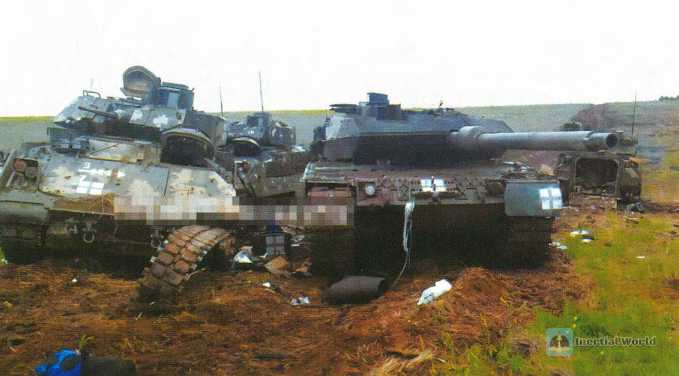
It is undeniable that in a pure confrontation between Russian and Ukrainian main battle tanks, Western tanks will undoubtedly have an advantage. However, on the information battlefield, it is a joint combat operation of all services, and it is difficult for any single service to win. According to Reuters on June 16, 2023, the Russian Ministry of Defense said on the same day that Russian troops who destroyed German-made "Leopard" main battle tanks and armored vehicles provided by the United States will receive bonuses. Russian Defense Minister Sergei Shoigu earlier awarded the Russian Hero "Gold Star Medal" to relevant Russian soldiers. The Russian Defense Ministry said that the reward for destroying an enemy armored vehicle is 50,000 rubles (about $596) and for destroying a tank is 100,000 rubles. Pilots and air defense system operators can get 300,000 rubles for each Ukrainian plane or helicopter destroyed. The same amount of reward can be obtained for destroying the "Tochka" tactical missile and the US "HIMARS" rocket launcher system.
Recently, both Russia and Ukraine have tried to shape the battlefield into an environment that is favorable to them through air strikes, drone strikes, missiles and artillery bombardments, and ground operations, rather than a full-scale offensive. Judging from the videos and related reports of the destruction of the German-aided Leopard 2 and the US-aided M1 Abrams main battle tanks in the Ukrainian counterattack, the main battle tanks will face the threat of air all-rounders.
Main battle tanks will face the hunting of anti-tank missiles on board armed helicopters
Armed helicopters hitting tanks is equivalent to eagles catching rabbits. Because armed helicopters have powerful anti-armor and anti-tank capabilities, they are honored as "tank terminators" or "killers on the treetops." Helicopter gunships against tanks are like eagles in the sky against rabbits on the ground. The rabbits have no power to fight back. The eagles move in three-dimensional space, while the rabbits are limited to two-dimensional space. No matter what, the eagles can always occupy the best attack position, while the rabbits can only be restricted by the ground.
On January 17, 1991, eight U.S. Army Apache gunships broke into the Iraqi army positions at ultra-low altitude, firing the first shot of the ground battle in the Gulf War. After that, a total of 277 AH-64A Apache gunships were deployed on the battlefield. In the 100-hour ground battle, they destroyed about 500 Iraqi tanks, as well as a large number of ground vehicles and artillery, and killed a large number of Iraqi troops. In the 100-hour ground battle in the Gulf War, 36 helicopters of an Apache gunship battalion of the U.S. Army destroyed 84 tanks and armored vehicles, 4 air defense systems, 8 artillery pieces and 38 wheeled vehicles of a tank column of the Iraqi Republican Guard in one fell swoop.

During the Russian-Ukrainian conflict, the Ukrainian armored forces launched a counterattack against Russia without gaining air superiority, and without the cover and support of their own field air defense systems or aviation forces. They were helpless in the face of the Russian Ka-52 "Short-lipped Crocodile" attack helicopter in the thermal imager state. As a result, a large number of Ukrainian main battle tanks were destroyed by anti-tank missiles launched by Russian armed helicopters, and infantry fighting vehicles were also hit by rockets. In addition, various advanced ground anti-tank missile weapon systems, such as the "Kornet" anti-tank missile system and the "Javelin" anti-tank missile system, are also a major "nemesis" of tanks and armored vehicles
Main battle tanks will face the threat of anti-tank mines
During the Russian-Ukrainian conflict, the Ukrainian armored forces have not yet encountered the attack of Russian tanks, but have successively suffered the threat of mines. Before the counterattack began, Ukraine did not conduct sufficient and comprehensive reconnaissance, nor did it conduct pre-emptive long-range fire strikes, which led to some armored units breaking into large deep minefields laid by the Russian army and suffering heavy losses. The same was true for the Russian tank units. When the Russian-Ukrainian conflict broke out, the video footage circulating on the Internet also showed that the Russian tanks were damaged and unable to move due to mines, and the vehicles carried by the infantry accompanying these tanks were also destroyed one after another after hitting mines.
Currently, there are many types of mines, which can be roughly divided into two categories: anti-infantry (AP) mines and anti-tank (AT) mines. The basic functions of these two types of mines are the same, but there are also some key differences. Anti-tank mines are usually larger in size and contain several times more explosives than anti-infantry mines. The explosives in anti-tank mines are enough to destroy a tank or truck and kill people in or around the vehicle. In addition, it usually takes more pressure to detonate anti-tank mines. Most of these mines are distributed on roads, bridges and large open areas where tanks may pass.
With the advancement of science and technology, the performance of explosives has been improved. While meeting the needs of target killing, the amount of anti-tank mines has decreased, and the fuze technology adopted has also improved, such as magnetic induction fuzes, acoustic fuzes, vibration fuzes, infrared fuzes, etc. These fuzes rely on their own sensitive devices to detect targets by sensing the changes in external magnetic fields, sounds, ground mines and infrared spectrum caused by armored vehicles approaching mines, and automatically release the insurance to enter combat mode, and detonate mines when the target enters the best killing (destruction) range. The most eye-catching of these is the radar fuze, such as the US XM84 anti-tank side armor mine, which uses a mine-borne radar fuze to detect moving targets and detonate the warhead when the target enters the predetermined position.
According to the Russian military’s battle report, in the battle on June 8, 2023, a mechanized infantry battalion-level unit under the 47th Mechanized Infantry Brigade of the Ukrainian Army used the Leopard 2 main battle tank as a "pioneer", followed by several M2A2 infantry fighting vehicles, and moved along a dirt road between large tracts of farmland on both sides toward the Russian army, and prepared to deploy a battle formation about a mile away from the Russian front. However, when the Ukrainian armored forces arrived at the predetermined location to assemble and prepare to launch an attack, they found that they had encountered a Russian minefield in front of them. Generally speaking, the Russian army will lay a variety of mines at the same time when laying minefields, including anti-tank mines and anti-personnel mines, so it is very difficult to remove them. In this case, it is difficult for the Ukrainian armored forces to open up multiple offensive channels with only a Leopard 2 main battle tank equipped with a minesweeper. Therefore, the Ukrainian army urgently dispatched another BMR-2 minesweeper tank. In this way, at least two offensive channels can be opened. However, during this process, the assembled Ukrainian armored forces were soon discovered by the Russian army and attacked from the air.
Main battle tanks will face long-range precision-guided weapons strikes
Precision-guided weapons are a general term for missiles, guided artillery shells, and guided bombs that use high-precision guidance systems and have a high probability of direct hits. Usually, non-nuclear warheads are used to attack key targets such as tanks, armored vehicles, aircraft, ships, radars, command and control communication centers, bridges, and arsenals.
Although precision-guided weapons are more complex and expensive to manufacture than general weapons, they have a higher probability of direct hits, so they have good combat effectiveness and high economic benefits. Compared with unguided weapons, precision-guided weapons consume less ammunition when completing the same combat mission, and the required combat costs are far lower than conventional ammunition. In the Falklands War between Britain and Argentina, the Argentine Air Force sank a British Navy destroyer "Sheffield" costing nearly $200 million with only a "Flying Fish" missile worth $250,000. In this battle, the Argentine army not only won a military victory, but also achieved considerable economic benefits.
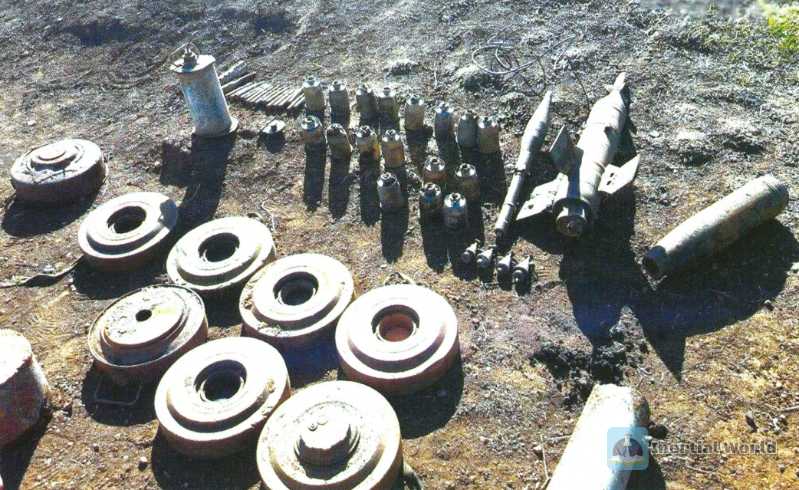


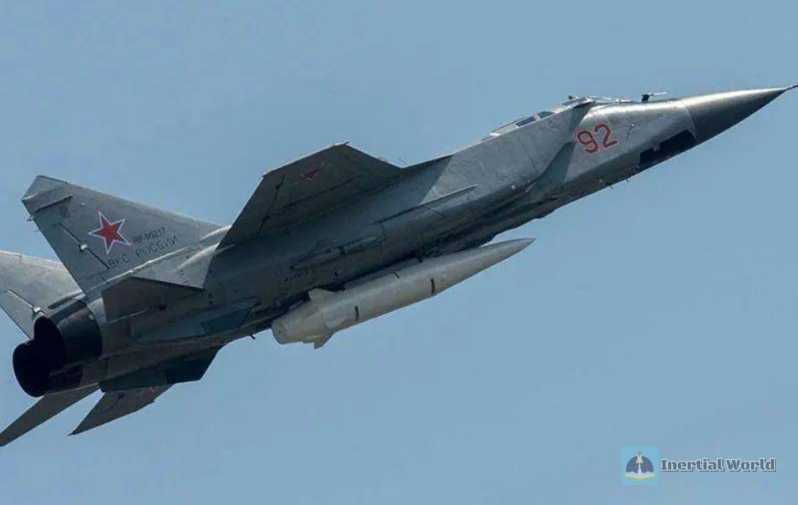
At present, the development of precision-guided weapons has almost integrated all the latest science and technology in today’s information age, especially the development of digital intelligent technology with information technology as the core. It has been serialized in use and formed a family series of different models. It is developing various long-range precision-guided weapons and continuously improving the survival probability of the launch platform. For example, the US military is developing a "Joint Standoff Weapon" and plans to increase the range of the existing "Army Tactical Missile System" to 150 to 250 kilometers. At the same time, it will improve the existing "Tomahawk" cruise missile, increase the range, and adopt GPS-assisted guidance. In order to improve the penetration capability of precision-guided weapons, stealth is an important way, such as the "Joint Direct Attack Munition" and "Three-Service Standoff Attack Missile" being developed by the United States. According to media reports, the US Navy launched a new high-tech all-weather long-range guided bomb nicknamed "Stormbreaker" GBU-53/B from the F/A-18E/F "Super Hornet" carrier-based fighter for the first time. It can detect, identify and track a large number of targets in severe weather conditions, and can use millimeter-wave radar, uncooled infrared imaging guidance and semi-active laser technology to guide bombs. It can send, receive and process information through Link-16 and UHF data links, and can track and destroy mobile armored targets 40 miles away.
However, some experts believe that to improve the penetration capability of precision-guided weapons, it is better to adopt existing supersonic attacks instead of spending effort on studying stealth measures, so that the opponent’s defense system has no time to react, which can also achieve the purpose of improving survivability and penetration. Therefore, increasing the attack speed of precision-guided weapons has also become a major development direction.
On May 2, 2023, Russian Defense Minister Shoigu said at a telephone conference of the Ministry of Defense that although Western countries have provided Ukraine with an unprecedented amount of military aid, the latter is suffering heavy losses. Shoigu said that Russia’s defense industry complex is ensuring that the needs of the army and navy are met. Compared with the beginning of 2022, the output of major weapon types has increased by 1.7 times, the output of "specially needed" weapon types has increased by 6 times, and the Tactical Missile Weapons Group has put new weapons into mass production. It is reported that the Russian army launched a new 305 air-to-ground missile with a total length of 1.945 meters, a width of 0.2 meters, and a weight of 105 kilograms. The warhead can carry 25 kilograms of explosives. This type of missile uses a solid rocket engine, with a flight speed of up to 230 meters per second and a range of up to 14.5 kilometers. This type of missile can be launched from a helicopter, and the optoelectronic guidance method used can locate the target by itself, and it can be left alone after launch, which has great advantages in actual combat. During the Ukrainian crisis, the Type 305 missile performed well, directly blowing up a large number of warehouses in Ukraine and severely damaging the Ukrainian army, including its ammunition depots and fuel depots. In addition to the Type 305 artificial intelligence missile, new weapons and equipment such as the Russian "Dagger" hypersonic missile, "Caliber" cruise missile and "Iskander-M" missile have also been put into the battlefield. It is worth mentioning that the new generation of hypersonic kinetic energy armor-piercing projectiles developed by Russia have been used for direct launch and targeting engagement, and will provide future infantry company combat units with unparalleled huge lethality, high first-shot kill rate and "close-range fire and forget" capabilities. The built-in tungsten armor-piercing warhead and high kinetic energy of this projectile allow it to penetrate all armor systems (including reactive armor), while also destroying active protection systems on vehicles or helicopters. Unlike other missiles, this warhead does not contain explosives. It mainly relies on its own powerful kinetic energy to destroy the armored protection layer of the tank. It can be widely used in armored tank battles, field fortress battles and other military purposes.
Main battle tanks will face the point-to-point killing of drone cruise missiles
Cruise missiles are also called "wandering ammunition" and "suicide drones". The payload is a thermobaric warhead, which can effectively strike "unarmored and lightly armored targets", and can also use high-explosive anti-armor warheads to strike armored personnel carriers, infantry fighting vehicles and main battle tanks. It can also carry powerful bombs and launch them at low altitudes to the aircraft carrier deck or crash into the aircraft carrier deck area to detonate suicide.
In recent years, Russia has developed cruise missiles at a rapid pace, launched a number of suicide drones with different characteristics and functions, and equipped with cruise missiles of different types and weights with different loads. For example, the "Lancet" drone is a typical cruise missile. It uses an advanced guidance system and can cruise in complex terrain and weather conditions. When the target appears, it will dive and attack on its own; the "Geranium-2" drone adopts a "flying wing" layout. Its wingspan is up to 2.5 meters, its length is at least 3 meters, its take-off weight is about 200 kilograms, and it carries a 50-kilogram high-explosive warhead. This drone is equipped with a piston engine with a propulsion propeller. Although the flight speed is only 170-180 kilometers per hour, its low fuel consumption allows its cruising range to be as high as 2000-2500 kilometers. The "Geranium-2" is equipped with inertial navigation and satellite navigation functions, which can accurately strike targets with known coordinates.
Since the outbreak of military conflict between Russia and Ukraine on February 24, 2022, both sides have continuously used a large number of suicide drones. On October 10, 2022, in the context of the positional warfare between the Russian and Ukrainian armies in the Donbass region, Kherson Oblast and Zaporizhia Oblast, the Russian army used drone swarms for the first time, dispatching the "Geranium"-2 drone to carry out large-scale and intensive strikes on Ukrainian energy, military command and communication facilities in Ochakov, Nikolayev Oblast. At the same time, in response to the threat of the US "National Advanced Surface-to-Air Missile System NASAMS) that Ukraine has obtained, the Russian army dispatched the "Lancet"-3 drone to destroy the Ukrainian army’s air defense command post, guard company headquarters and fuel depot in one fell swoop. It is reported that a total of about 20 "Geranium"-2 and "Lancet"-3 participated in the operation, and the two drones successfully complemented each other when performing the mission. This is the first time that the Russian army has intensively used suicide drones on the battlefield, which has caused panic among the Ukrainian military leaders.
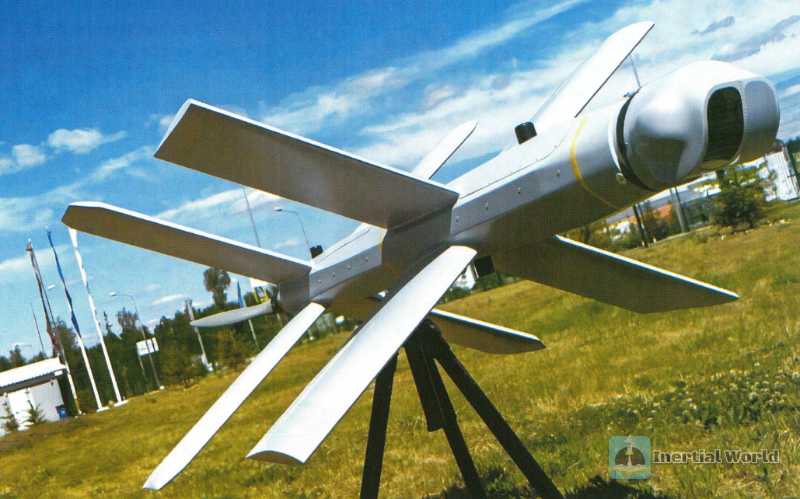
On November 4, 2022, Russian News Agency released two exclusive videos: one video showed that the Russian army used the "Lancet" drone cruise missile to attack a Ukrainian military speedboat in the Dnieper River Basin; another video showed that the Russian army used the "Lancet" drone cruise missile to destroy two self-propelled artillery provided by the United States to Ukraine in the Nikolayev-Krivoy Rog direction of the special military operations area against Ukraine. In the early morning of December 19, 2022, the Russian army dispatched 35 "Kamikaze" drones to Ukraine, hitting key infrastructure in and around Kiev.
Since the Ukrainian army announced the start of the counterattack, the Russian and Ukrainian armies have been engaged in fierce battles in Zaporizhia and Donetsk, and the Leopard 2 main battle tanks and M2A2 infantry fighting vehicles that NATO aided Ukraine were destroyed by Russian cruise missiles, which became a hot topic for a while. In early June 2023, a return picture suspected to be taken by the cruise missile of the "Lancet" drone showed that the "Lancet" drone launched a cruise missile to target a Ukrainian Leopard 2A4 main battle tank and then successfully destroyed it. Coincidentally, in October 2023, the drone combat team of the 114th Motorized Infantry Brigade of the Russian Army, near the two settlements of Stepovo and Bertych in the north of Avadivka, once again used the "Lancet" drone to successfully hit the chassis of a Leopard 2A6 main battle tank, and then the tank exploded and caught fire. This tank belongs to the elite 47th Mechanized Infantry Brigade of the Ukrainian Army.
In fact, drones launching cruise missiles to attack armored vehicles have already been staged in the Nagorno-Karabakh conflict. In the Nagorno-Karabakh conflict, in addition to using heavy weapons including tanks, armored vehicles, heavy artillery, long-range rocket launchers and even tactical ballistic missiles, Azerbaijan and Armenia also used new equipment such as drones to participate in the war. In particular, Azerbaijan has invested a large number of drones and cruise missiles of different models, and carried out a series of precision strikes in the frontline areas, achieving remarkable results, causing heavy losses of personnel and equipment to Armenia, and winning a certain battlefield advantage for itself, thus triggering the outside world’s attention and discussion on the actual combat use of drones. Among them, the most outstanding drones used by the Azerbaijani army are the Turkish-made Flagship TB-2 drones, as well as a considerable number of Israeli drone/cruise missile systems, among which the "Harop" cruise missile is the most representative. At the first moment of the conflict, the Azerbaijani army put a large number of drones into combat and took active actions on the front line. According to a communiqué issued by the Azerbaijani Ministry of Defense, the Azerbaijani infantry and tank units, with the support of their own artillery, missiles, front-line aircraft and drones, scouted and destroyed Armenian troops, military facilities and weapons and equipment in the frontier and in depth, and claimed to have destroyed 12 "Hornet" air defense missiles; later released the first video footage of drone precision strikes since the conflict, titled "Enemy’s military equipment destroyed", from which it can be seen that the Armenian air defense missile position was attacked. At that time, although the "Huangfeng" air defense system guidance radar was operating, it failed to respond to the drone attack. This video should have been taken from another drone monitoring the battlefield. As of October 3, 2020, Azerbaijan has claimed to have destroyed 250 Armenian armored vehicles and a similar number of artillery, as well as 39 air defense systems, including an S-300 air defense system.
Any reaction, this video should be taken from another drone monitoring the battlefield. As of October 3, 2020, Azerbaijan has claimed to have destroyed 250 Armenian armored vehicles and a similar number of artillery, as well as 39 air defense systems, including one S-300 air defense system.
During the Russian-Ukrainian conflict, the Ukrainian army launched a ground attack rashly without gaining air superiority and lacking the protection of low-altitude and near-air defense weapons when counterattacking. As a result, the Leopard 2 main battle tanks and M2A2 infantry fighting vehicles of the Ukrainian army were attacked by cruise missiles launched by the "Lancet" drones and even the simply modified FPV anti-tank drones before they saw the shadow of the Russian tanks and armored vehicles, causing heavy losses. The video clips recently released by the Russian army show that the reason for the heavy losses of German tanks and American tanks was that they were attacked by Russian suicide drones and armed helicopters. In addition to professional cruise missiles, the Russian army also widely uses suicide drones or loitering ammunition modified from non-military drones on the battlefield. Combat personnel can remotely control drones to find, lock and attack targets. The entire process is guided by the thermal imaging instrument on the drone. The cost is low, but the effect cannot be underestimated. Therefore, this method has been widely adopted by the Russian and Ukrainian armies.
Since 2021, the "Orion" reconnaissance and strike drone developed by the Kronstadt Group has been equipped with the Russian army. In February 2021, Russian media first disclosed the actual combat footage of the "Orion" drone in Syria, and disclosed the scene of the aircraft using desert paint to carry out precision strikes on ground terrorist target facilities. According to the star-shaped markings painted on the fuselage of the aircraft showing the number of combat takeoffs, this "Orion" drone carried out 17 attack flights with weapons, 20 reconnaissance flights, and 1 flight for other purposes in Syria. According to public reports, the "Orion" has a flight endurance of up to 24 hours, a maximum take-off weight of 1,100 kg, and a combat load of 250 kg. It is capable of attacking ground targets with small missiles and guided bombs. According to a report by Russia-24 TV on March 25, 2021, a Russian Air Force "Orion" attack drone launched a missile suspended under the fuselage during a test flight at a military test site, accurately hitting and destroying a retired L-39 trainer aircraft parked on the ground, and the aircraft was enveloped in flames. The "Orion" reconnaissance and strike drone can undoubtedly effectively deal with tanks and armored vehicles.
Conclusion
In short, in the modern war system, tanks and armored vehicles will undoubtedly face many "killer" threats, such as armed helicopters carrying anti-tank missiles, precision-guided munitions, drones, etc. The survivability of tanks and armored vehicles is getting weaker and weaker, and traditional combat methods cannot adapt to modern combat needs. In the future, how to improve the survivability of tanks and armored vehicles and adapt to the modern combat system is also an important direction that countries need to pay attention to and study.
















